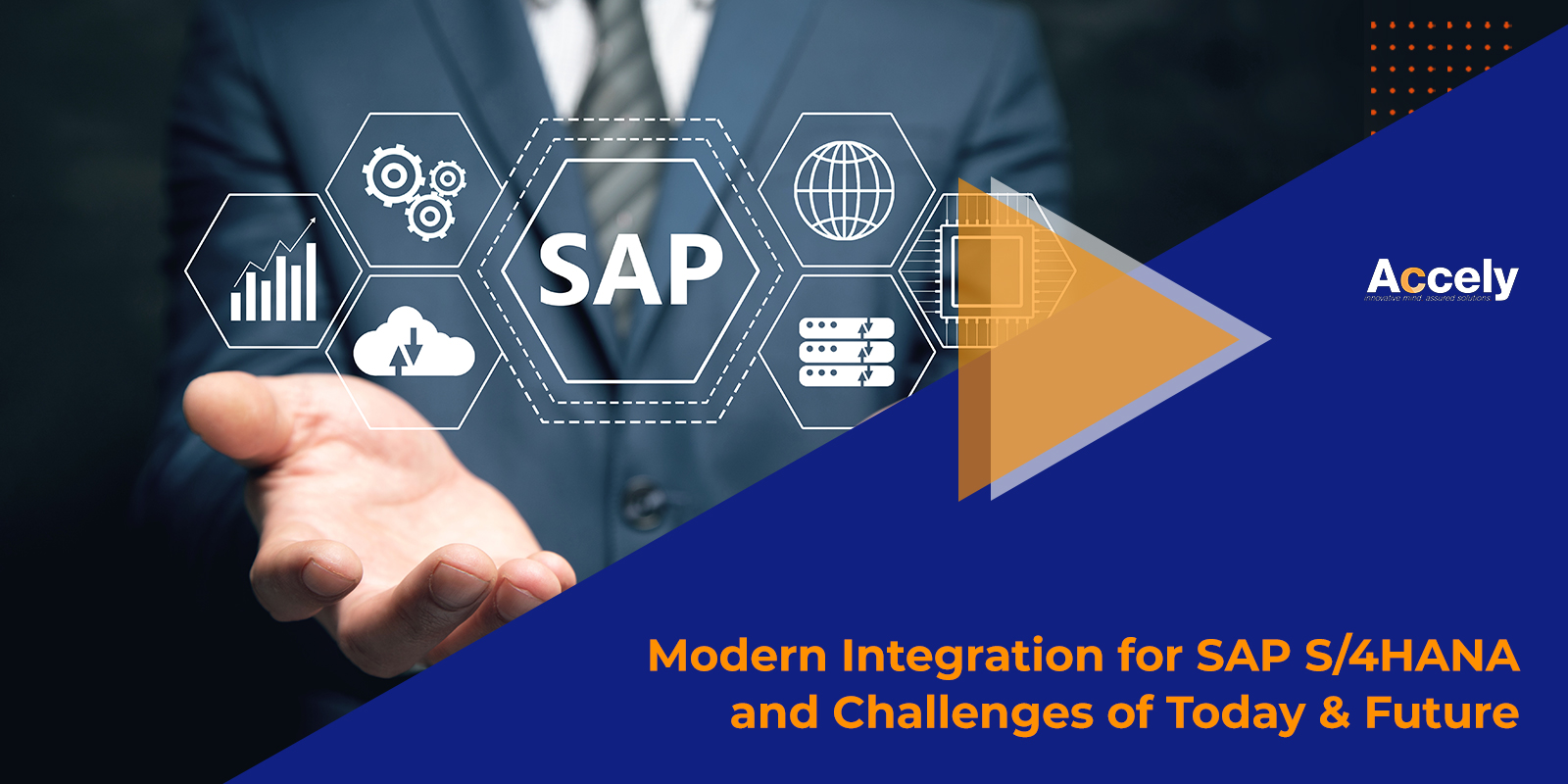Modern Integration for SAP S/4HANA and Challenges of Today & Future
18-Oct-2022SAP, as we know, has been at the forefront of innovations, especially in the ERP sector. However, there’s been a huge uproar within the community as the ECC ERP version of SAP will no longer be effective for support after the 2027 deadline.
Adding to it, the challenges of growing system landscapes are real. In a scenario where every business is running to cover different demands, SAP has tried to settle the issues with its latest “RISE with SAP” program, a new “business transformation as a service” initiative.
With RISE in your system, SAP intends to move your ERP to its cloud, offering to advance and quicken your efforts in digital transformation while also saving you money.
But is SAP’s commitment to supporting you save 20% genuine?
Or do SAP’s RISE objectives more accurately reflect their goals about your yearly expenditures with SAP?
Let’s find out as we explore the idea behind the newly launched program.
RISE with SAP: Idea Behind the Innovation
RISE with SAP offers “clients at all phases of digitalization an entirely new way to re-imagine processes for improved business outcomes,” the company claims.
RISE with SAP appears to focus less on revealing novel approaches to assist customers in running their businesses in the cloud. Adding to it, there’s more on capturing significant wallet share and account control. The platform does it by requiring customers to modify their business processes to confirm SAP’s unmodified software on SAP’s entire technology stack.
With that strategy, this might be SAP’s last shot at being the industry authority on what constitutes an “intelligent enterprise”.
Why Should Business Transformation be a Part of S/4HANA Project?
As mentioned earlier, the SAP community is in an uproar over the removal of support for SAP ERP Version ECC in 2027. However, what most businesses fail to realize is that SAP will be replacing its previous ERP version with a more upgraded platform, with better access to operations in the cloud or on-premise.
In its pathway to development, SAP included new and better elements to resolve multiple disruptive situations.
Despite this, SAP customers are still motivated by the final product, S/4HANA. Modern technology advancements like cloud, social media, mobility, and in-memory computing have completely changed processes, business models, and corporate strategies.
With the newly developed SAP technology, S/4HANA can modify business operations, open up new opportunities, and address previously insurmountable problems. The ability for companies to advance is there, but there are obstacles.
Present-Day Challenges in Integration
Building a business case with a significant return on investment (ROI) based purely on technological promises is very challenging. Better updates and new platforms alone are not very beneficial to organizations in the case of SAP S/4HANA.
Adding to it, process improvements should also be included in SAP S/4HANA to deliver a significant return on investment. But advancements also bring with them new information on technical possibilities, which in turn influences IT strategy.
SAP is known as “The Intelligent Enterprise” of this strategy. An integrated enterprise, or intelligent enterprise, has one theme up front: integrated business processes.
This integration technique breaks up the fragmented IT environments, creating a comprehensive integration of business processes, technology, and data. This does accelerate innovation while reducing the work required for integration.
Additionally, it offers the chance for in-the-moment information and unmistakably enhances operations.
Many integration landscapes have numerous point-to-point links that are frequently tightly connected. This has some drawbacks, such as the absence of a central repository, even though it is generally not negative. In addition, reusability is frequently limited because each case is typically very unique.
Additionally, the knowledge of how to integrate particular systems frequently remains in the heads of individual experts on that subject, which could often result in a poorly governed landscape.
Every expert performs the integration that he deems to be the most appropriate, whether it be the advancement of a specially made CSV processing tool or the coding on the sender or receiver side.
Future Challenges in the Realm of Integration
We want to be best of breed and best of sweet, said a member of the SAP Executive Board at the SAP Global Partner Summit a few years ago. The integration of components is essential for success, as was said at a partner summit: “Integrate partner intelligence into the SAP universe.” Through partnerships, SAP solutions are made more accessible to various technical integration options and the issue of how to serve clients effectively.
Presently, SAP provides solutions that address the entire organization, offering customers the chance to generate value by utilizing hyper-scale services like AWS, Azure, GCP, etc.
Innovation is the key, and these companies are highly known for their revolutionary inventions. By exposing SAP to open standards, users have the chance to effortlessly incorporate cutting-edge technologies like APIs, IoT scenarios, and data analytics, just to name a few.
Bottom Line
Avoid overthinking and switch to the SAP S/4HANA system. Start with simple integration scenarios that will help with SAP implementation in one step rather than a large upfront design (although this is necessary to some extent). Reduce the number of requirements you provide and put them into practice more rapidly.
Thanks to this, you may establish confidence within your company by achieving small goals early on. To gain early feedback from the company, try to adopt a more agile strategy and create MVPs (minimum viable products). Because, once more, a flashy technological solution is useless if neither the firm nor its external partners benefit.












